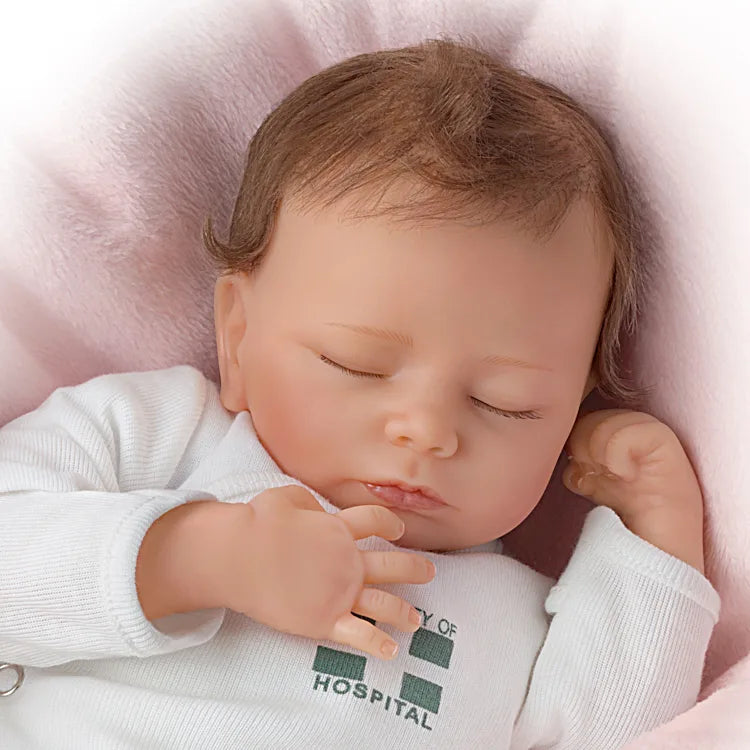As a new mother, seeing your baby breathe can be exciting, but it can be frightening if the baby starts breathing extremely fast or slow. Those small chests going up and down are all natural; still, it is normal to wonder if everything is all right. Learning about your baby’s breathing pattern helps you feel sure they’re healthy.
This article explains what normal breathing is, what’s alarming, and what to do if your baby breathes fast while sleeping. You’ll also find easy tips to feel calmer. Let’s learn how to spot healthy breathing and when to call the pediatrician.
Normal Baby Breathing vs Retractions: What’s the Distinction?
Newborns don’t breathe like adults; they belly breathe. Their breathing might seem choppy, quick breaths mixed with short pauses. This is normal! Babies usually take 30–60 breaths a minute, slowing a bit during sleep. You might also see their belly move more than their chest (we’ll talk about that next!).
Retractions, on the other hand, signal something’s wrong. This happens when your baby struggles to breathe, causing the skin between their ribs, under their chest, or above their collarbone to pull inward with each breath. This is like their skin is being sucked in—this is quite alarming.
Let’s suppose that you have a 3-week-old baby whose ribs tug in with every breath. The baby might be suffering from bronchiolitis, and you may have to call the doctor and take the baby to the emergency room.
What’s In It For You?
Knowing the distinction between regular breathing and retractions allows you to act rapidly in an emergency, perhaps preventing consequences.
Belly Breathing: When to Relax and When to Stay Alert
Babies breathe with their bellies! Adults use their chest muscles, but newborns use their diaphragm (a muscle under the lungs). This makes their belly rise and fall with each breath—it’s healthy and helps them breathe deeply.
During tummy time, you may feel your 2-month-old's stomach press against the floor with each breath. You can remember this is normal and snap a cute video instead of worrying.
When to Be Cautious
If belly breathing is paired with any of the following, it could indicate respiratory distress:
- Flaring nostrils
- Grunting sounds
- A blue tint around the lips
Trust your instincts; if something feels “off,” talk to your doctor.
Is Baby Breathing Fast While Sleeping a Problem?
Babies often breathe faster during active sleep (the REM phase), with rates up to 60 breaths per minute. Their breaths might sound irregular or pause for 5–10 seconds before resuming. This is usually normal.
If you notice that your 4-month-old baby is breathing rapidly, check for some signs of retractions or a blue tint by watching his chest. A baby monitor with a screen and app can help you remotely check how your baby is breathing without leaving your bedroom. Some monitors also come with a two-way talk system so that if your baby cries for some reason, you can listen and calm them down through your voice.
When to Worry?
Fast breathing with fever, coughing, or wheezing could mean an infection. Persistent rapid breaths (over 60/min while asleep) necessitate a doctor’s visit.
When Do Babies Start Breathing Through Their Mouth?
Newborns breathe largely via their nostrils for the first several months. Around 3-4 months, many newborns begin mouth breathing, especially if congested. However, chronic mouth breathing (without a cold) could indicate blocked nasal passages and needs evaluation. This may result in the baby snoring loudly, and you must consult a pediatrician.
What’s In It For You?
Understanding this milestone helps you distinguish normal development from issues like nasal obstructions or sleep apnea.
Practical Ways to Stay Vigilant Towards Your Baby’s Breathing
Changes in the baby’s sleeping posture can help improve breathing. For example, you can put your baby in an upright position to address the breathing problem. Similarly, using the right bottle nipples and proper latchment while you breastfeed can keep your baby’s respiratory health optimal.
Many parents find comfort in tools that provide extra reassurance. For example, a baby breathing monitor can clip to clothing or rest under the mattress to track breathing movements and alert you to irregularities. Others prefer a video baby monitor to watch their baby’s chest rise and fall in real time, even from another room.
God forbid if your baby experienced a respiratory disorder, you can use a baby heart monitor. It reassures that your little one is getting a comfortable nap. However, you will still have to follow safe sleep guidelines.
Remember, these tools are helpers, not replacements for medical advice. Always pair them with regular checkups.
Final Thoughts
Your baby’s breathing tells you a lot about their health. You'll feel more in control once you know what’s normal (belly breathing, occasional fast breaths) and what’s not (retractions, constant mouth breathing). And if you’re ever unsure? You must consult a pediatrician, and everything will be alright.





Share: